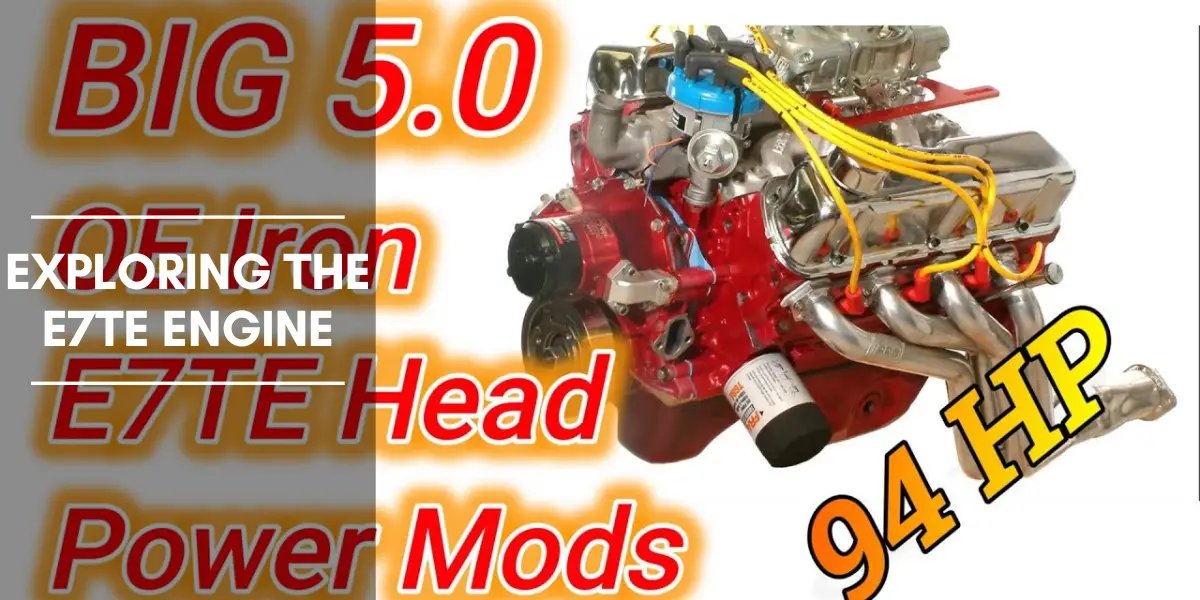In this article, we will get into the technical aspects of the E7TE engine. We will uncover the engine’s history, design, components, and specifications while shedding light on why it has garnered attention in the automotive industry.
To put it simply, the E7TE engine is a Ford small-block V8 engine belonging to the Ford 302 Windsor family, primarily used in trucks and passenger vehicles in the late 1980s and early 1990s. This engine stands out due to its unique features and design characteristics.
Let’s begin our journey by understanding the Ford 302 Windsor family, from which the E7TE engine was born.
Understanding the Ford 302 Windsor Family
The Ford 302 Windsor family is a series of small-block V8 engines designed and manufactured by Ford Motor Company. The 302 Windsor engine, first introduced in 1968, quickly gained popularity among automotive enthusiasts due to its versatile nature and impressive performance.
Technical Specifications of the E7TE Engine
- Block and Crankshaft-The E7TE engine features a cast iron block with a 4-inch bore and a 3-inch stroke, resulting in a 302 cubic inch (5.0-liter) displacement. The engine’s robust design ensures durability and reliability, even in demanding conditions. The E7TE’s crankshaft is made of nodular cast iron, providing high-strength and resistance to wear.
- Cylinder Heads-A key feature that sets the E7TE engine apart is its distinct E7TE cylinder heads. Made from cast iron, these heads showcase a restructured combustion chamber design, leading to improved airflow and combustion efficiency. The E7TE heads have smaller intake and exhaust ports compared to earlier 302 Windsor heads, resulting in better low-end torque and throttle response.
- Camshaft and Valve Train-The E7TE engine employs a hydraulic roller camshaft, offering several advantages over traditional flat-tappet camshafts. Hydraulic roller camshafts decrease friction, enhance fuel economy, and increase horsepower and torque across the RPM range. The valve train features stamped steel rocker arms and 1.72:1 rocker arm ratio, ensuring optimal valve lift and improved performance.
- Intake and Exhaust Systems-The intake manifold of the E7TE engine is engineered for superior airflow and optimal performance. It utilizes a dual-plane intake manifold, balancing low-end torque with high-RPM power. The exhaust system incorporates cast iron exhaust manifolds designed to improve flow and minimize backpressure.
- Fuel Delivery System-The E7TE engine makes use of a sequential multi-port fuel injection system, which delivers precise fuel metering and improved combustion efficiency. This system not only enhances overall engine performance but also contributes to better fuel economy and reduced emissions.
Applications of the E7TE Engine
The E7TE engine was featured in various Ford vehicles throughout its production run, such as:
- Ford F-150 and F-250 trucks
- Ford Mustangs
- Ford Broncos
- Ford Thunderbirds
- Mercury Cougars
The E7TE Engine’s Enduring Legacy
Although the E7TE engine’s production ceased in the early 1990s, it remains a popular choice for those seeking a dependable and powerful small-block V8 engine. Its unique design elements and performance capabilities make it a sought-after option for engine swaps and restorations.
Conclusion
The E7TE engine is a testament to the engineering prowess of Ford Motor Company. With its unique design, construction, and technical specifications, it has managed to stand out in the world of small-block V8 engines.
Its reliable performance and versatility have made it a favorite among automotive enthusiasts, even though it is no longer in production.
Today, the E7TE engine’s legacy lives on through the countless vehicles it powered and the dedicated fans who continue to appreciate its capabilities. As technology advances and new engines are developed, the E7TE engine will remain a significant piece of automotive history, reminding us of the innovation and performance that defined an era.


